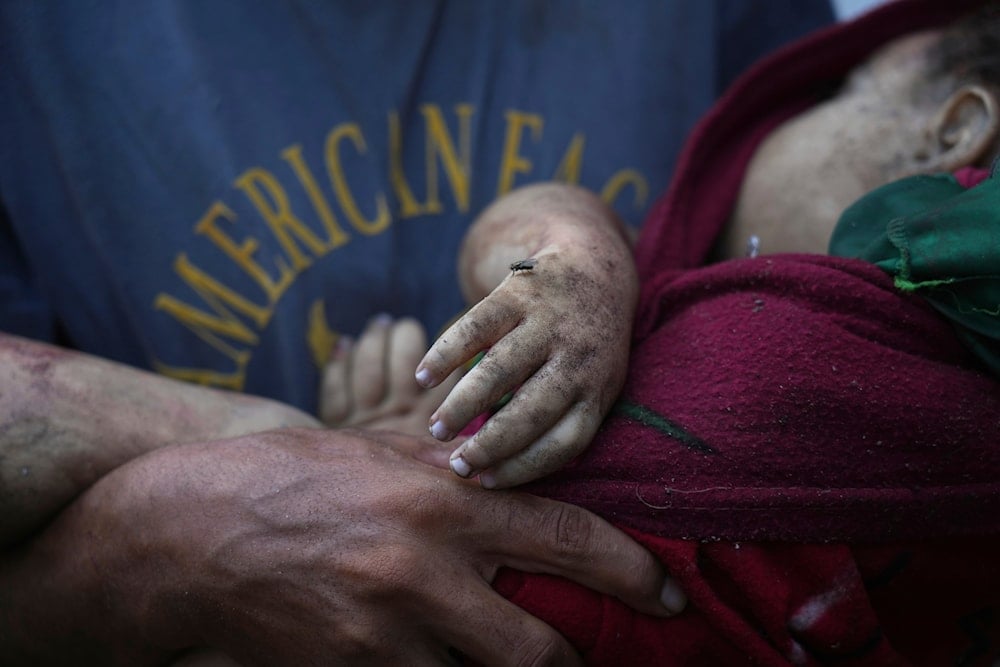Civilians in Gaza sustain war injuries at rates beyond combat troops
A BMJ study reveals that civilians in Gaza suffer injuries more severe than those of US soldiers in Iraq, with children enduring fourth-degree burns.
-

Alaa Hassanein carries the body of his 4-year-old niece, Sara Hassanein, who was killed in an Israeli military strike on a school used as a shelter, outside Al-Shifa Hospital, in Gaza City, Friday, Aug. 22, 2025. (AP)
Civilians in Gaza have sustained injuries of a type and on a scale more usually seen among professional soldiers involved in intense combat operations, a new research has found.
A study published in the British Medical Journal (BMJ) found that some types of wounds, such as burns or injuries to legs, were more common among civilians in Gaza than among US soldiers fighting in the wars on Iraq and Afghanistan.
“Injured civilians in Gaza are experiencing a pattern of wounds that you would expect in intense combat with military professionals. The distribution and nature [of injuries] is almost the same or worse,” bioethicist Bilal Irfan, one of the study's authors, told The Guardian.
The peer-reviewed research, which is the first of its kind, drew on data provided between August 2024 and February 2025 by dozens of international medical professionals who have worked in Gaza during the nearly two-year-long war.
Irfan explained that the data did not include most fatal injuries, noting that it only represented the patients who made it to the hospital and therefore survived. He added that they do not even have a full profile of the serious injuries of those who died without any medical attention.
Children with fourth-degree burns
The authors found that burns were particularly common and severe, especially among children, and that more than one-tenth of burn injuries were fourth-degree, meaning they penetrated all tissue layers down to the bone. The study stated that the extent of traumatic injury victims reflects the impact of indiscriminate aerial and heavy explosive bombardment in civilian areas.
Firearm injuries made up about 30% of war-related trauma.
According to The Guardian, 78 experts who provided data came from 22 NGOs from Britain, the US, Canada, and the EU, and included specialists in several disciplines. They were interviewed or they provided data within three months of their deployment in Gaza.
Dr. Victoria Rose, a consultant plastic surgeon working at St Thomas’ hospital and King’s College hospital in London and another of the journal article’s authors, said the findings should sound alarms through the halls of government worldwide and the humanitarian community.
The medics who contributed to the new study, working under the severe constraints of the Israeli siege on humanitarian aid entering the Gaza Strip, found that malnutrition had worsened patient outcomes by delaying wound healing and causing preventable deaths from otherwise treatable conditions.

 3 Min Read
3 Min Read








